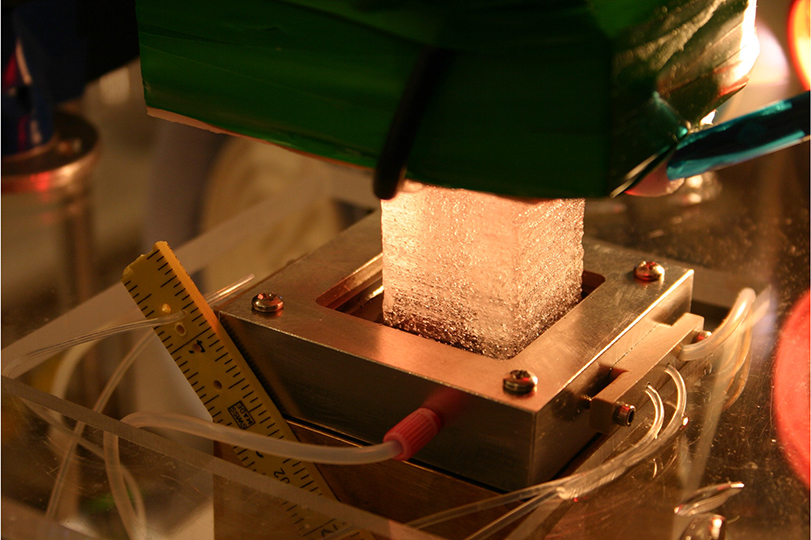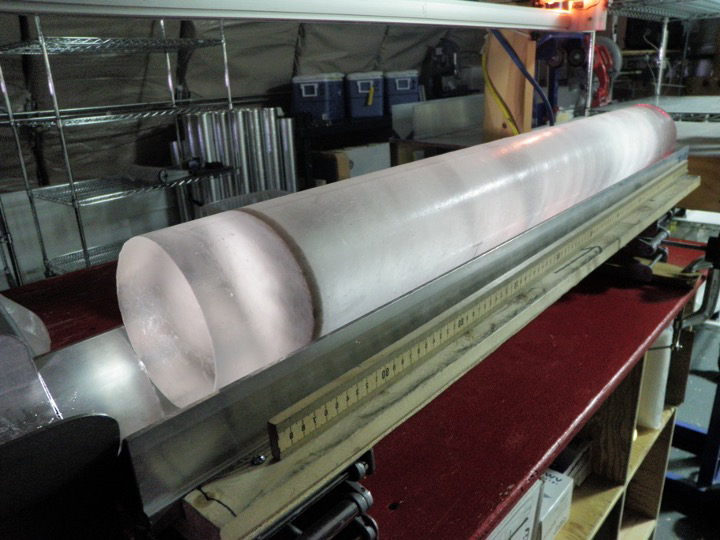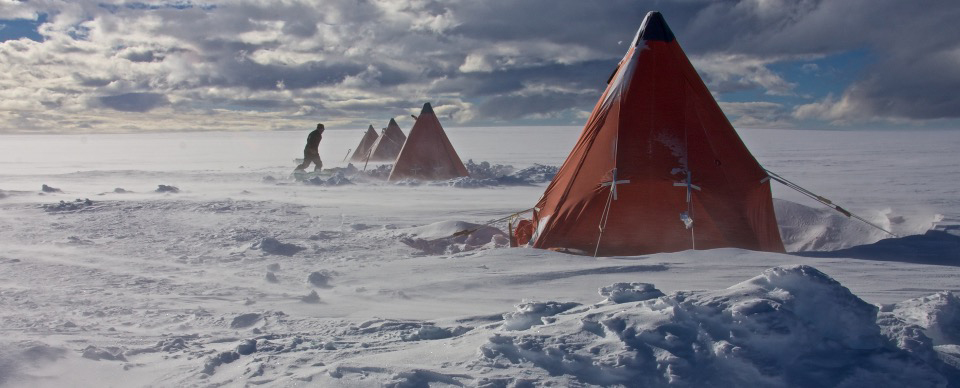Black carbon in the Southern Hemisphere increased after the 13th-century Maori arrival in New Zealand National Science Foundation 
Photo Credit: Joe McConnell
Measuring the chemistry in a longitudinal sample of an ice core on DRI’s unique ice core analytical system.
4201 Wilson Boulevard Arlington, VA 22230
Posted October 18, 2021 New Zealand was among the last habitable places on earth to be colonized by humans, and recent NSF-funded research is using well-dated Antarctic ice-core records to determine the impact of human settlement. Charcoal records indicate that wildfires were rare before human colonization. However, following the 13th- to 14th-century Maori settlement in New Zealand, researchers have modeled that the New Zealand palaeofire coincides with the increase in black carbon deposits in Antarctica. 
Photo Credit: Jack Triest
The James Ross Island core drilled to bedrock in 2008 by the British Antarctic Survey provided an unprecedented record of soot deposition in the northern Antarctic Peninsula during the past 2000 years and revealed the surprising impacts of Maori burning in New Zealand starting in the late 13th century. Robert Mulvaney, Ph.D., pictured here led collection of the core
The increase of black carbon deposits started around 1297 in the northern Antarctic Peninsula, which corresponds with the late 13th-century Maori settlement. While some records suggest earlier carbon deposits from Tasmania and southern Patagonia, the increase of deposits in Antarctica shows that black carbon emissions from burning in New Zealand are much higher than from other regions during the past 2,000 years. Read the full article on the Nature website.
|
Black carbon in the Southern Hemisphere increased after 13th-century Maori arrival in New Zealand



For USAP Participants |
For The Public |
For Researchers and EducatorsContact UsNational Science FoundationOffice of Polar Programs Geosciences Directorate 2415 Eisenhower Avenue, Suite W7100 Alexandria, VA 22314 Sign up for the NSF Office of Polar Programs newsletter and events. Feedback Form |


